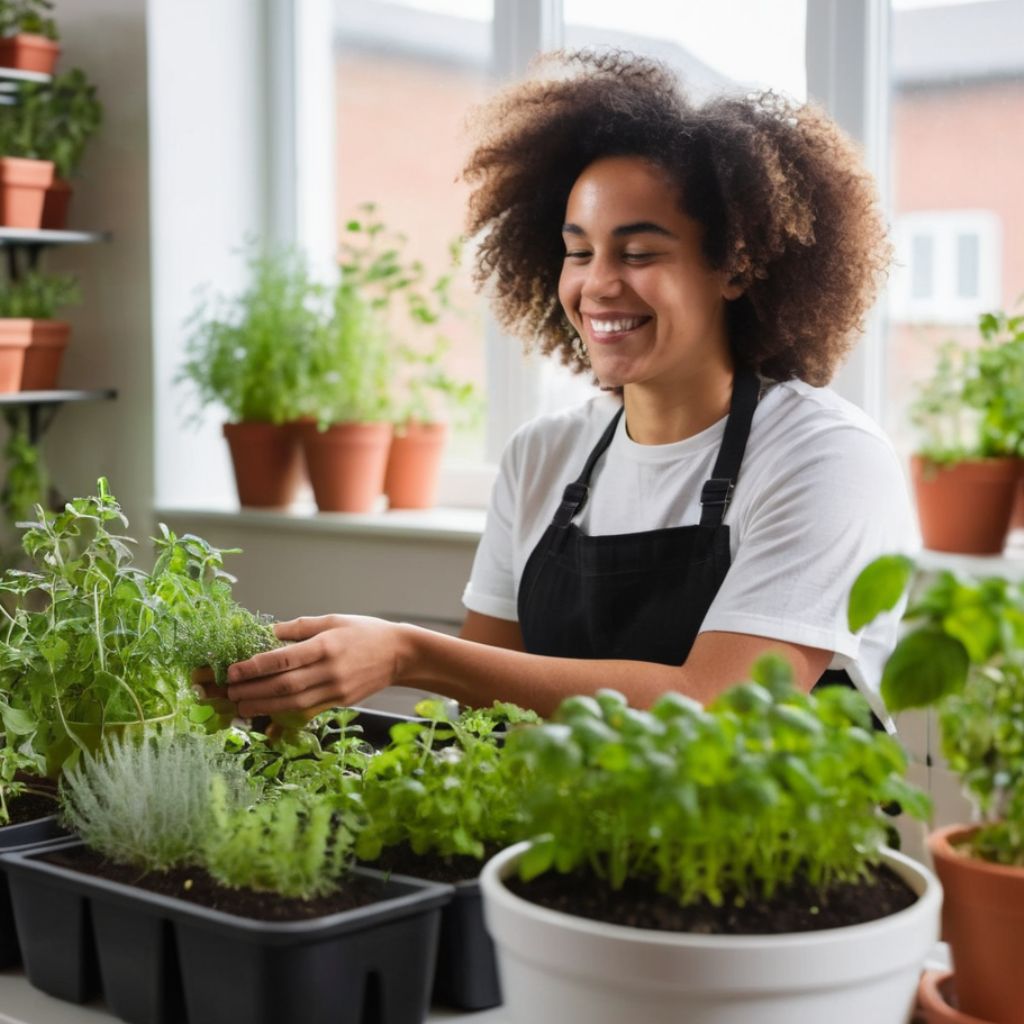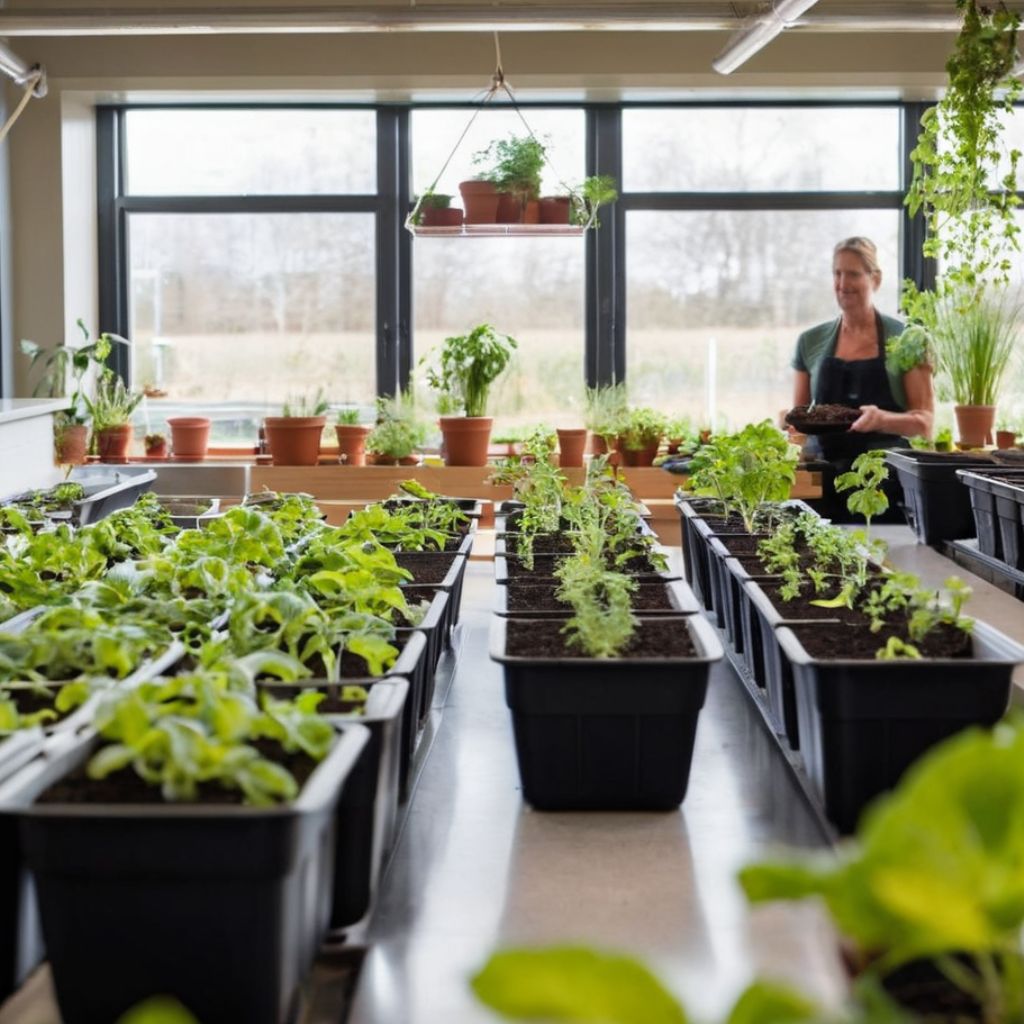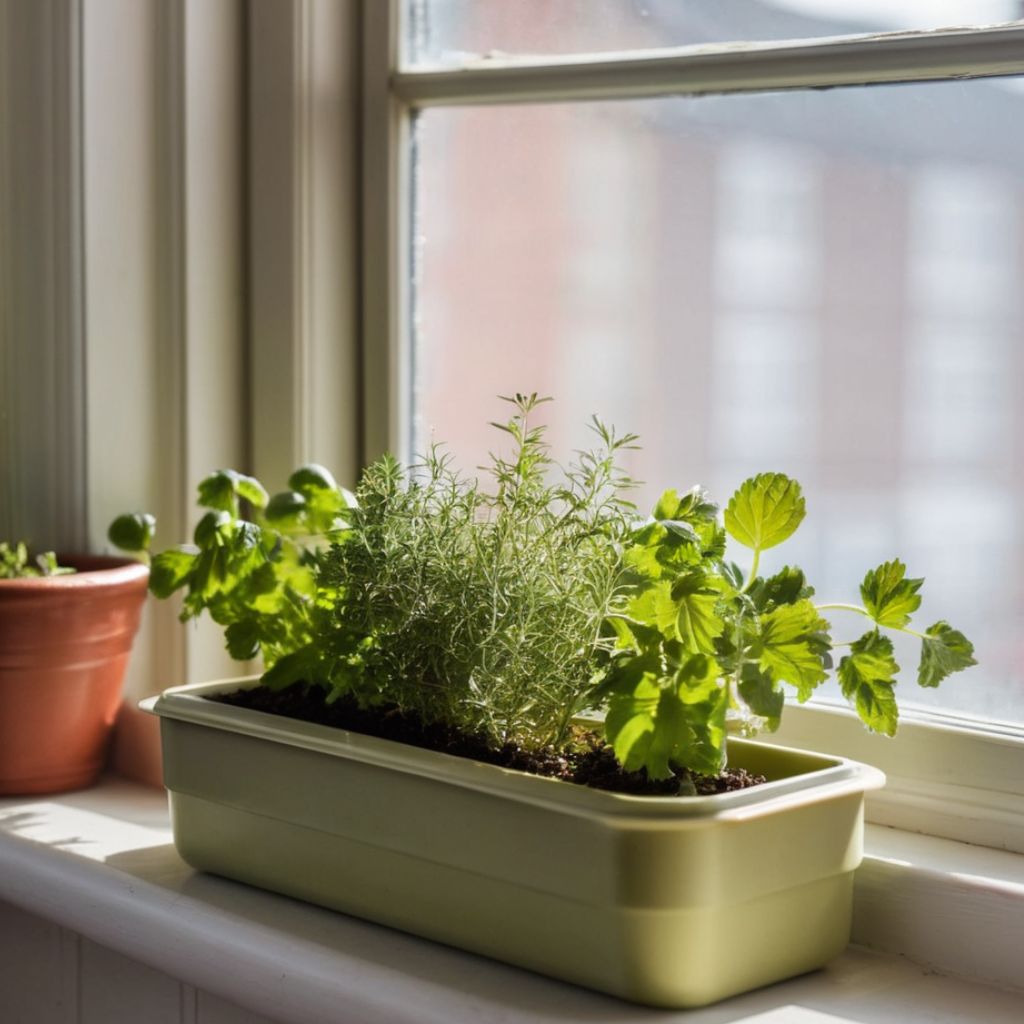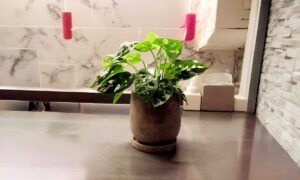
The impact of indoor gardening on sustainable living is significant. Indoor gardens not only provide fresh produce but also contribute to a greener, more sustainable future. We explore the various aspects of indoor gardening, including its role in the sustainable food revolution and the practical benefits it offers.
In this article
Green Living, One Potted Plant at a Time

In the era of fast food and convenience, the journey from farm to table has often been replaced by a labyrinth of food miles.
Here’s where your indoor garden becomes a game-changer.
Imagine plucking fresh herbs or crisp vegetables right from your indoor oasis, eliminating the need for extensive transportation and reducing your carbon footprint.
Indoor gardening allows you to take control of your food supply, ushering in a new era of conscious consumption.
The sustainable food revolution begins at home, in the pots and planters that adorn your living space.
Indoor gardening offers a tangible way to grow nutrient-dense food right inside your home, contributing to a more sustainable and eco-conscious lifestyle. Here are some insights from the provided sources:
- Growing Food Indoors: Trystan Donovan, founder of Modern Sustain, shares easy ways to grow food right inside your home, highlighting which plants thrive in indoor environments and how to grow nutrient-dense food in your kitchen.
- Zero Waste Kitchen: Embracing a zero-waste kitchen and reducing plastic footprint can align with indoor gardening efforts. This approach involves rethinking and redesigning processes to get food from the earth into our homes, including growing food indoors to reduce reliance on external food sources.
- Health Benefits of Indoor Plants: Indoor plants not only contribute to sustainable food production but also offer powerful health benefits. Studies have shown that indoor plants can reduce physiological and psychological stress, improve air quality, and enhance overall well-being.
- Food Garden for Self-Reliance: Starting a food garden at home can ease food supply anxiety and support health. Growing your own vegetables contributes to self-reliance, cleaner and safer food, and a reduced reliance on industrial agriculture, aligning with the principles of sustainable food production.
Incorporating indoor gardening into your living space not only supports sustainable food production but also offers numerous health and environmental benefits, contributing to a more eco-conscious and self-reliant lifestyle.
It’s a delicious way to contribute to environmental well-being while savoring the literal fruits of your labor.
The Eco-Friendly Symphony of Indoor Gardening
Let’s talk numbers—the environmental impact numbers.
Indoor gardening checks multiple boxes on the sustainability scale. First and foremost, it reduces the need for long-haul transportation, cutting down on the carbon emissions associated with bringing produce from far-flung places to your plate.
Your indoor garden becomes a local, sustainable hub of fresh, organic goodness.
Moreover, the controlled environment of indoor gardening minimizes the need for pesticides and herbicides, fostering a chemical-free haven for your plants.
This eco-friendly approach to gardening offers several benefits:
- Reduced use of chemicals: Indoor gardening promotes the use of natural pest control methods and avoids the use of toxic chemicals, such as pesticides and herbicides, which can harm both plants and the environment.
- Organic growth: Growing plants indoors is a 100% organic process that doesn’t require any pesticides or chemicals. This organic approach to gardening contributes to a healthier environment and reduces the exposure of toxic substances.
- Zero waste: Indoor gardening systems, such as the ones used by Novagrow, are designed to minimize waste and promote a more sustainable approach to urban agriculture.
- Food security: By growing food locally and organically, indoor gardening contributes to food security and reduces the reliance on long-distance transportation and industrial agriculture.
- Community engagement: Urban agriculture, including indoor gardening, brings communities together and promotes a sense of shared responsibility for sustainable food production.
You’re not just growing food; you’re cultivating a haven of health for both you and the planet. It’s a symbiotic relationship where the more you give to your indoor garden, the more it gives back to you and the environment.
Your Role in the Green Revolution

In the grand tapestry of the green revolution, your indoor garden is a thread that weaves together sustainability and self-sufficiency.
It’s a small but significant step toward reducing the ecological footprint of our food consumption.
As you tend to your indoor plants, you’re participating in a global movement—a movement that recognizes the importance of localized, sustainable food sources.
Consider the water savings, too. Indoor gardens generally require less water than traditional outdoor gardens, thanks to controlled watering systems and the absence of water evaporation under the scorching sun.
It’s a mindful use of resources that aligns with the principles of sustainable living.
Your Indoor Garden, Your Grocery Store
Your indoor garden is not just an aesthetic addition to your home; it’s a mini grocery store at your fingertips. It becomes a living pantry, offering a diverse array of flavors and nutrients without the need for a trip to the grocery store.
The joy of harvesting your own food goes beyond the satisfaction of culinary creation; it’s a deeper connection to the sustenance that nourishes you.
As you witness the journey from seed to table, you become a conscious consumer, aware of the effort and care invested in each bite.
Cultivating Culinary Creativity
Indoor gardening is not just about sustainability; it’s also a canvas for culinary creativity.
The herbs, fruits, and vegetables you cultivate can inspire a spectrum of gastronomic delights. Experiment with unique flavor combinations, try your hand at creating signature dishes, and let your indoor garden be the muse for your culinary adventures.
The beauty of indoor gardening lies in its ability to transcend the traditional boundaries of gardening.
It’s not just about cultivating plants; it’s about cultivating a lifestyle—one that embraces sustainability, creativity, and a deep connection to the food on your plate.
The Future on Your Windowsill

As we delve into the sustainable potential of indoor gardening, it’s clear that your humble windowsill or balcony holds the key to a greener, more conscious future.
The sustainable food revolution isn’t a distant dream; it’s a tangible reality that unfolds with every seed you plant and every harvest you reap.
In the next segment of our indoor gardening exploration, we’ll delve into the urban landscape, unraveling the ways in which indoor gardening breaks the green ceiling in urban spaces. From high-rise apartments to cozy studio flats, discover how indoor gardening transforms concrete jungles into lush sanctuaries.
Stay tuned for Part 3, green enthusiasts, as we embark on a journey to bring the serenity of nature to the heart of the city.







